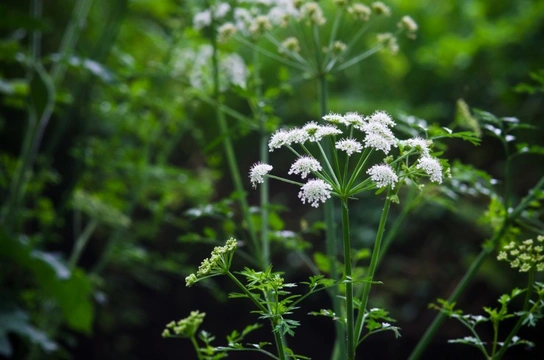
Protecting your dog from the “most poisonous plant in Britain”
As dog owners, often it seems as if very few days go by without a new warning or hazard to our pets coming to the fore on the internet and in the news, and this is obviously very concerning when it comes to keeping track of all of the potential risks that may face our dogs in their day to day lives!
The latest addition to the ranks of potential toxins and dangers is an innocuous-looking wild plant called water dropwort, which is also known as water hemlock in certain areas; both terms, however, refer to the same plant.
Water hemlock is more likely to pose a risk to grazing animals that live alongside of it than to domestic dogs, but after a recently publicised case in which a dog died after eating a little of the plant, dog owners are now being warned to be vigilant as well.
So, what is water dropwort, why is it dangerous, what does it look like and how can it affect dogs? Read on to learn more.
What is water dropwort?
Water dropwort is a plant from the Apiaceae family, and as the name suggests, it grows in damp ground and shallow water. It can commonly be found in areas such as marshes, bogs and on the banks of streams, ponds, lakes and canals, or pretty much any freshwater area.
Water dropwort has been hailed as “the most poisonous plant in Britain” by experts, and it also grows prolifically in many other parts of the world too.
Water dropwort is poisonous to all animals, including people and dogs, and a small dose of the plant can lead to a lingering death over the course of a week or more, while a larger dose can actually prove fatal to both man and beast inside of a few hours.
Water dropwort is poisonous due to a certain type of toxin present within the plant, called oenanthotoxin. While the leaves of the plant are not toxic and can be safely consumed by grazing animals, the stems and the roots of the plants are very poisonous.
The plant is actually a member of the carrot family, and when the stems or roots of the plant are broken, they release a smell very similar to carrots. The root stalks of the plant contain multiple small chambers, which hold a brown or beige-looking liquid that forms the main toxin load of the plant, and poses the greatest risk to life.
Identifying water dropwort
The chances are that you’ve probably seen water dropwort growing wild hundreds of times, and not given it a second glance! The plant grows prolifically across certain areas of Britain, and can be found in any moist, damp soil, particularly on the banks of rivers or canals and in marshes and bogs.
The plant has thick, fibrous roots that look rather like parsnips, and the leaves look rather like parsley. Plants can grow between 3-5 feet high, and unlike many poisonous plants, the roots and leaves do not taste unpleasant when eaten. The tops of the plants tend to be covered in large heads of small white flowers, and the stems of the plant are dark green and smooth.
The symptoms of water dropwort poisoning in dogs
Learning to spot wild water dropwort is an essential skill for dog owners that live in areas where it grows, as you will need to keep an eye on your dog around the plant in order to ensure that they don’t start digging around the roots or decide to treat the plant as a light snack!
Water dropwort poisoning in dogs is serious, severe and often, fast in onset. Some of the core symptoms that present after ingestion can include:
- Drooling.
- Muscle twitching or spasms.
- Nervousness.
- Dilated pupils.
- Increased heart rate.
- Hyperventilating.
- Tremors.
- Seizure.
- Coma.
Treating water dropwort poisoning in dogs
For dogs, death after ingestion of water dropwort usually occurs due to uncontrollable seizures that prevent the lungs and heart from working effectively, and if rapid intervention takes place, it is possible that the animal can be saved.
Ingestion of water dropwort by your dog is a veterinary emergency, and as soon as you realise that your dog has eaten the plant, you should call your vet, tell them this and take the dog to the clinic ASAP.
Successful treatment of water dropwort poisoning requires early intervention, and the first steps that your vet will take will likely involve inducing vomiting, washing out the stomach by means of a lavage tube, and giving the dog activated charcoal to absorb any remaining toxins.
Anti-seizure medications will then be administered to reduce the severity of the seizures, which may compromise the function of the essential organs, and placing the animal on oxygen while carefully monitoring them is likely to follow.
While it is generally considered to be unlikely that dogs will eat the leaves of the plant or deliberately seek to eat it, in areas where the roots are exposed or if your dog likes to dig like many terrier breeds do, including the popular Jack Russell, the highly toxic roots of the plant may become exposed. The appealing shape and texture of the roots, accompanied by their slightly sweet taste, may potentially encourage your dog to eat them.



